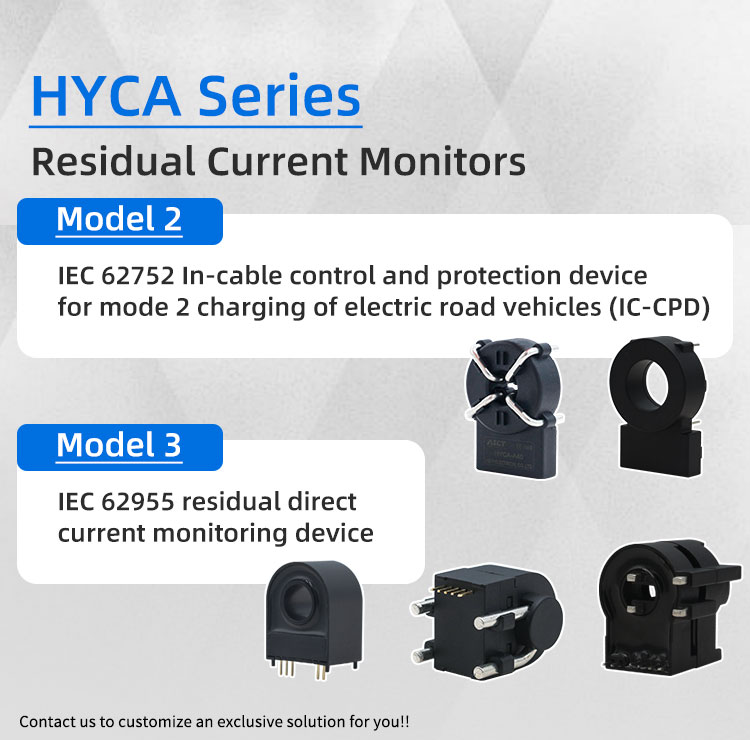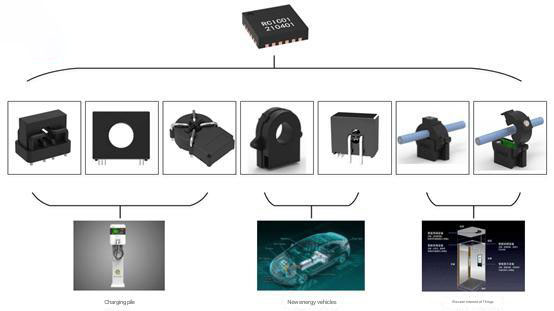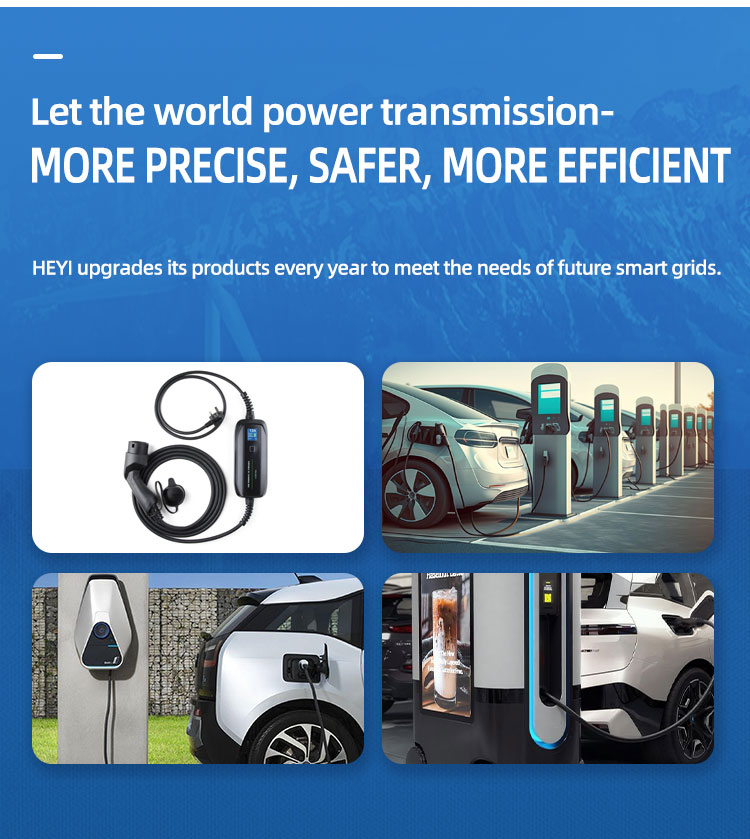News | company news | Mar 27,2025
Current sensors for electric vehicle charging systems in the India
The latest power electronics and conversion solutions are alleviating concerns about range and battery life, thereby increasing consumer acceptance of electric vehicles, while it is also important to improve the efficiency, safety and performance of power conversion systems in an economical way. In terms of electric vehicle charging performance, it is necessary to ensure strict power factor correction (PFC), measure current and optimize conversion, while also ensuring proper thermal management. In the power conversion system, these aspects affect each other.
Current measurement helps manage thermal performance when it comes to the performance and efficiency of electric vehicle charging solutions. It is important to note that improper thermal management can be damaging and costly. The right current sensing approach can improve the performance, safety, and cost-effectiveness of power electronics. Advanced current measurement solutions also provide users with early fault detection and real-time performance information. The ability to quickly and accurately detect vehicle overcurrent conditions or other performance losses enables the system to predict and resolve potential circuit issues in a timely manner.
HYCA residual current sensor series
Simple shunt-based current sensing solutions measure the voltage drop to determine the current flowing through the circuit. Resistive detectors can provide good dynamic performance and linearity, but have limitations in sensing both high and low currents. Active compensation can help address this issue, but the resistive power dissipation of the shunt itself can become a thermal issue when high currents are present in EV charging systems. Such sensors are contact-based, adding system complexity and the potential for failure.
The Hall sensor is a more complex solution than the streaming solution, it is isolated, and it lacks accuracy and bandwidth compared to other solutions. Depending on the topology and performance required of the circuit, it can be deployed in a compact configuration. Solutions using current transformers are isolated and can be more accurate depending on the circuit topology. Its size and weight are an issue, and this solution is not well suited for cost-effective, compact automotive charging systems.
In the field of advanced overcurrent and undercurrent protection, the speed and power levels required by electric vehicle battery charging systems require the best solutions. As the switching speed of electric vehicle charging systems becomes faster and the power levels become higher, traditional fuses and circuit breakers often cannot meet the needs, and every critical link needs to be monitored in real time.
To provide a cost-effective solution, home charging systems are typically deployed at the highest possible power density. This means that the latest EV chargers must have advanced current measurement capabilities to detect faults early and gain performance information in real time. Advanced charging systems must always be alert to out-of-range current conditions and other performance challenges, alerting the system to potential thermal and performance issues. Other parts of the system are equally important in EVs (and many industrial motor drive applications), such as traction inverters and other drive systems. Using advanced current sensing as a way to gain additional vehicle performance information (real-time battery discharge rate) is another advantage of the battery management system, further improving the safety and reliability of EVs.
Avoid risks and improve performance
Many next-generation chargers are out of range, especially in compact home systems. To anticipate and address potentially dangerous problems, hard-drive EV battery charging systems must be able to immediately detect out-of-range current conditions or other performance losses. Dangerous problems include typical ground faults and short circuits, as well as the danger of operating at extreme power and load conditions that the system cannot support. Advanced current monitoring in the charging system also performs the initial part of the feedback control loop function, regulating the performance, efficiency, and thermals of the power circuits in the inverter.
Current measurement is a critical aspect of over- and under-current protection. At the speeds and power levels of EV charging systems, traditional fuses and circuit breakers are not adequate unless used to prevent catastrophic failures in extreme cases. Advanced current sensing enables intelligent fault management to better address potential performance issues such as user errors and minor damage to cables and connectors.

Type B advanced sensing solutions protect against overcurrent conditions and improve safety due to fast response and large current measurement range. These isolation devices can operate on both the high and low sides of the circuit, and their integrated nature reduces design complexity compared to shunt and amplifier solutions. For example, on the high voltage side of a power circuit, the new sensing current sensors can detect ground faults in the phase current (which may be caused by wiring errors, aging, etc.), thereby protecting the entire circuit.

When it comes to system safety, power and heat are inextricably linked. Power electronics must account for any external heat that increases the thermal load encountered by the system, which means any power electronics design must also be optimized for internally or externally generated thermal conditions. If not handled properly, heat generated by power management circuits can affect the performance of nearby electronics, especially sensitive analog components such as sensors, forcing these products to run at higher operating temperatures than normal. Advanced current sensing methods can help monitor these thermal issues in circuits.

Advanced current sensing methods can improve system performance by reducing the instability of electric vehicle charging, the risk of system failure and other circuit issues. New Sensing’s current sensors use anisotropic magnetoresistive (AMR) technology, which is accurate and contactless, and reduces design complexity compared to solutions using shunts and isolation amplifiers in addition to optimizing performance.
The power factor of a circuit is an important part of the power quality equation and is critical to the effective operation of advanced electric vehicle chargers. Power factor correction (PFC) in the circuit improves the power factor ratio and power quality, making the equipment more energy efficient while also reducing grid stress and electricity costs. By applying ideal compensation in real time at the load point to improve the power factor, advanced current sensing on the low voltage side can be used to increase available power.
Advantages
Small size and small footprint allow integration into compact IC-CPDs to avoid dangerous situations caused by DC fault currents
Preventing Type A RCCB saturation
Save expensive Type B RCCD
Volume Optimization
Low cost AC/DC current sensitivity
Preventing Type A RCCB saturation
Self-monitoring and testing capabilities
Robust mechanical design for IC-CPD
Feature
Fault current detection according to IEC 62752 or UL 2231
Frequency range DC to 2 KHz
Load current up to 80 Arms (single phase) or 3 x 32 Arms (three phase)
Switching output 6 mA DC and 30 mA AC (according to IEC 62752)
Integrated self-monitoring and testing functions
The measurement resolution is 0.2 mA
Models with through-hole or integrated main conductor
Differential current range 0~300 mA
Robust mechanical design suitable for IC-CPD environmental requirements (e.g. drop test)
Widely used in harsh electronic environments (such as resistance to external magnetic fields)
The sensors can trigger automatic shutdown in the event of dangerous electrical faults (DC and AC) according to IEC 62752 or UL2231 standards.
Leakage protection residual current sensor
standard
Meets IEC 62752 Mode 2 charging-related residual current test requirements.
Meets the residual current test requirements of IEC 62955 Mode 3 charging photon emitting tubes.
It basically meets the requirements of GB/T 22794 and is suitable for DC 6mA test requirements.
Future prospects of the India
The EV charging ecosystem is still evolving, and we are still a long way from the final configuration we want to achieve. With the next generation of circuit management solutions driven by Sensor current sensing solutions, you can drive safely and cost-effectively while maintaining vehicle performance. Efficiency, reliability, and performance are intertwined, and the right current sensing solution will serve every aspect of the EV charging system.
--- END ---

Dec 23, 2025
Switch position indicators are parts of systems. In my work I have seen switch position indicators, in power plants, substations and industrial control cabinets. Switch position indicators show the status of a switch from a distance. There are two kinds of switch position indicators: switch position indicators and electronic (LED) switch position indicators. Each kind… Continue reading How to Choose Mechanical and Electronic Switch Position Indicator

Dec 22, 2025
Cómo seleccionar correctamente transformadores de corriente para exteriores en Sudamérica: ejemplos de RECT y OCT de HEYI Electric En la construcción y operación de sistemas eléctricos en Sudamérica, la elección del transformador de corriente para exteriores es fundamental. Trabajo en un proyecto eléctrico. Busco un transformador de corriente que aumente la seguridad de los equipos.… Continue reading Cómo seleccionar transformadores de corriente para exteriores en

Dec 18, 2025
HEYI Electric: Providing complete solutions for power engineering projects in Malaysia, from current monitoring to status indication. The biggest challenge, for companies in Malaysias power sector is keeping the system reliable and making monitoring easy. HEYI Electric offers more, than measurement products. HEYI gives a set that includes precision current transformers, flexible current transmitters and… Continue reading Position indicator switch is used to create solutions for Malaysia.